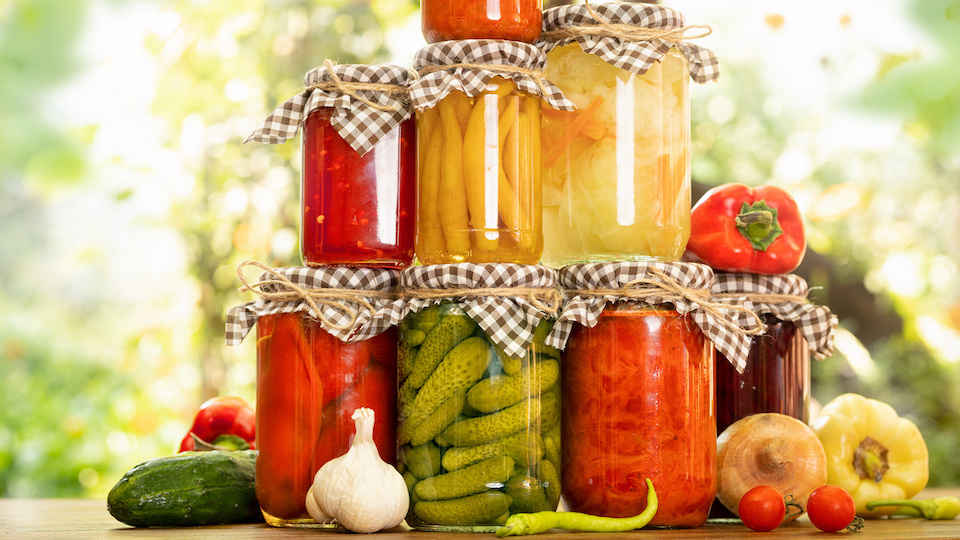When you think of food preservation, the first thing that probably comes to mind is canning. What you might not know is that there are numerous ways, some old, some new, to store your fresh garden harvest and other foods through the winter and beyond. Knowing which preservation methods work best for certain foods will help ensure the best and freshest flavor.
Cold storage
Cold storage is a super easy way to preserve root crops. It is one of my favorites because it is so simple and requires only a cool, dark, and damp spot. Some of the best crops to store in a cold storage include:
- Carrots
- Cabbage
- Beets
- Potatoes
- Apples
- Beets
- Onions
- Garlic
Drying and dehydrating
Drying food has to be one of the oldest methods of food preservation. Food can be dried using several methods, including:
- Solar dehydrators
- Sun ovens
- Baking sheets in the oven
- Air drying
- Commercial dehydrators
All veggies, fruits, and herbs can be dried. You can also dehydrate some meat and eggs, but be sure that you are following safety procedures for drying these foods.
Water bath canning
Water bath canning involves immersing canning jars filled with food in a boiling water bath. The food must have a pH of 4.6 or lower to be canned safely at home. If you are new to canning, water bath canning is a great place to start because you only need some Mason jars, lids, bands and any large pot with a rack to keep jars off the bottom of the pot. There is nothing quite as delicious as home canned fruit! Foods that you can safely water bathe include most fruits, jams, jellies, fruit butters, syrups, marmalade, and pickled vegetables. You can also do tomato sauce, but it requires the addition of acid, and if you do salsa, they must be tested canning recipes so that the overall pH level is 4.6 or lower to avoid botulism.
Freezing
Foods can be kept for several months and even years when packaged properly and frozen. A deep freezer is an excellent choice for beef, chicken, and some fruits and veggies. You would be surprised at the number of foods that can be frozen, including milk, cheese, and even eggs. If your chickens are laying too many eggs, just pop a few in the freezer to use later. The only issue with freezing is space and electricity to operate as well as the risk of a power outage.
Fermenting
Fermenting is also a very time-honored method that uses a culture of friendly bacteria to preserve the food. Not only is fermenting a great way to keep food, but it also offers numerous benefits, including better digestive health. The fermentation process changes low acid foods into high acid foods, which gives them a longer shelf life. Salt, whey, or starter cultures are used to ferment food and make it highly nutritious and easy to digest. Fermented food is also called “live culture food.” Fermenting vegetables such as pickles, sauerkraut, and kimchi is a popular pursuit amongst food preservationists.
Pressure canning
If you want to safely can non-acidic food, including vegetables, meat, soups, and combination recipes, pressure canning is the right choice. A pressure canner allows jars to reach a higher temperature than just boiling water, which ensures that all bacteria (especially botulism which can be fatal) are destroyed. When executed properly, pressure canning is extremely safe, but it is important to know what should not be pressure canned at home. One really neat advantage of pressure cooking is that when you take the lid off, the food is already pre-cooked and ready to serve. When life is hectic, or there is an emergency or power outage, pressure canned food is an excellent go-to.
Alcohol immersion
Several herbs and fruits can be immersed in alcohol to create extracts. Mint, vanilla, and lemon extracts are delicious to use in baking.
Happy preserving!




